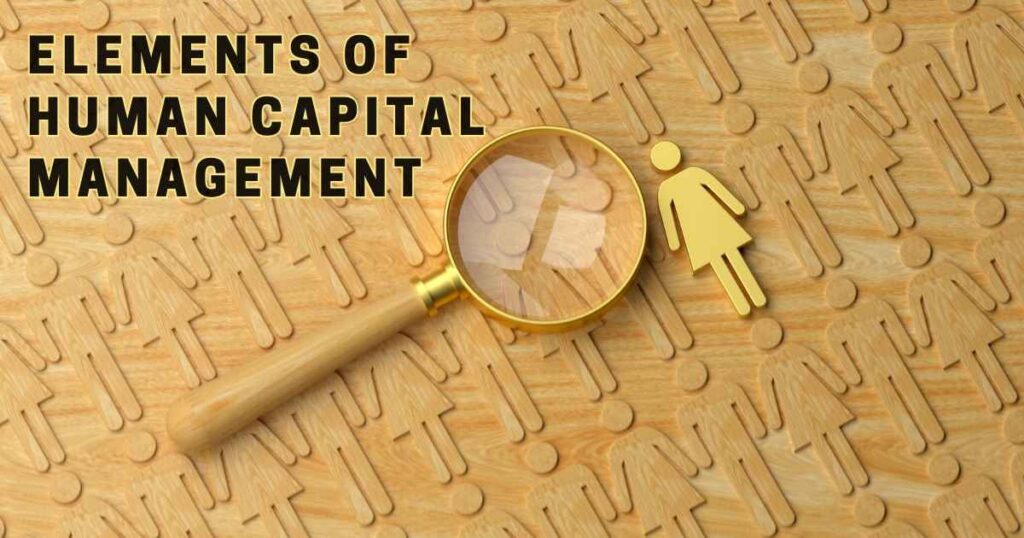If you’re looking for ways to improve your human capital management (HCM), you’ve come to the right place. In this blog post, we’ll share four tips that will help you attract, develop and retain your most valuable asset: your employees. But first, let’s define what HCM is and why it matters.
HCM is a set of practices and tools that transform traditional HR functions into opportunities to drive engagement, productivity and business value. The HCM considers your workforce as more than just a cost of doing business; it is a core business asset whose value can be maximized through strategic investment and management. HCM covers all aspects of the employee life cycle, from recruiting and hiring to training and performance management.
Why should you care about HCM? Because it can help you achieve your business goals by leveraging the full potential of your human capital. According to IBM, organizations that excel at HCM can:
- Increase revenue by 26% per employee
- Reduce turnover by 57%
- Improve customer satisfaction by 40%
Sounds impressive, right? But how do you get there? Here are 4 effective ways to improve your HCM:
1. Align your HCM strategy with your business strategy
2. Use data and analytics to make informed decisions
3. Provide personalized learning and development opportunities
4. Create an environment where appreciation and feedback are commonplace.
Ready to learn more? Keep reading as we dive deeper into each tip and show you how to implement them in your organization.
What is human capital management?
Dealing with people in your organization is just a fancy way of saying “Human Capital Management (HCM).” HCM takes care of everything from getting people on board, to teaching them the ropes, to recognizing their performance & paying them, to keeping them healthy and happy. Basically, anything that affects your human capital, which is another fancy term for your employees.
What’s the deal with HCM and why should it matter to you? Basically, people are your most valuable resource. So I hear. Really, people can be your most costly and hard to predict asset. They can fall ill, leave, take legal action against you, or even worse. You should use HCM to get those people managed properly and quickly. HCM can bring you the top talent, keep them motivated, in line with your objectives and beliefs, and measure their effect on your profits.
How do you do HCM? There’s a lot of stuff that falls under HCM, like tools and strategies. You can use programs like SAP or Workday to make your processes automated & more efficient. Using surveys & feedback tools like SurveyMonkey or Glassdoor can help you collect data and gain insight from your employees. You can check out analytics & dashboards like Tableau or Power BI to keep track of and try to improve your results. You can also get advice from consultants and coaches like Deloitte or McKinsey on what’s best and what’s trending.
Don’t forget though, HCM is really all about the people, not just numbers or tech. Treat your people with respect and dignity, not like objects or problems. Talk to them openly and honestly, not like robots or little kids. Give them the autonomy and responsibility to think and act for themselves, not like they’re robots or puppets. You should show appreciation for their accomplishments and efforts, not just view them as an expense or liability.
That’s what HCM is all about: managing your human capital in a way that benefits both them and you.
Elements of Human Capital Management

If you think human capital management (HCM) is just a fancy way of saying “managing people”, think again. HCM is more than just hiring and firing employees. It’s a strategic approach to maximizing the value of your most important asset: your human resource capital. HCM involves planning, developing, rewarding and retaining talent across your organization. It also involves aligning your human capital with your business goals and culture. Sounds complicated, right? Don’t worry, we’re here to help. We’ll show you how to master the elements of HCM and become an HCM hero in no time.
HCM Element 1: Talent Acquisition
The first element of HCM is talent acquisition. This is where you find and attract the best candidates for your open positions. You need to have a clear understanding of your hiring needs, your employer brand and your value proposition. You also need to use effective sourcing strategies, such as referrals, social media and job boards. And don’t forget to screen and interview candidates thoroughly, using behavioral and situational questions to assess their fit and potential.
HCM Element 2: Talent Development
Talent development is the second component of HCM. This is where you help your employees succeed & flourish in their positions. Give them regular feedback, coaching, and mentoring. Provide them learning chances, like trainings, workshops, and online sources. Don’t forget to help them map out their career paths and set up succession plans, so they can get an idea of how they can move up in the company.
HCM Element 3: Talent Management
The third element of HCM is talent management. This is where you motivate and engage your employees to perform at their best. You need to set clear expectations, goals and metrics for them. You also need to reward them for their achievements, using both monetary and non-monetary incentives. And don’t forget to recognize them for their contributions, using both formal and informal methods.
HCM Element 4: Talent Retention
The fourth element of HCM is talent retention. This is where you keep your employees loyal and happy with your organization. You need to provide them with a positive work environment, where they feel respected, valued and supported. You also need to offer them flexibility, autonomy and work-life balance options. And don’t forget to solicit their feedback regularly, using surveys or focus groups.
By mastering these four elements of HCM, you’ll be able to optimize your human capital management strategy and achieve better business outcomes.
Human Capital Management Tools and Software

If you think managing human capital is easy, think again. Human capital is not like other types of capital that you can just buy, sell, or invest in. Human capital is made of humans, and humans are complicated creatures with emotions, opinions, and personalities. They also have needs, wants, and aspirations that may or may not align with your organizational goals.
That’s why you need human capital management (HCM) tools and software to help you manage your most valuable asset: your people. HCM tools and software can help you with strategic human capital management, which means aligning your human resource capital with your business strategy and objectives. HCM tools and software can also help you with operational human capital management, which means taking care of the day-to-day tasks and processes related to your workforce.
Some of the benefits of using HCM tools and software include:
- Improving employee engagement and retention by providing them with feedback, recognition, development opportunities, and rewards.
- Enhancing productivity and performance by optimizing workflows, schedules, assignments, and goals.
- Reducing costs and risks by automating compliance, payroll, benefits administration, and reporting.
- Increasing innovation and agility by fostering collaboration, communication, learning, and creativity.
What’s the hold-up? Unlock the power of your human capital by starting to use HCM tools and software today. You’ll be blown away by the results!
4 Tips for Improving Human Capital Management at your company
HCM is just another way of saying HR – it’s no big deal. Taking a strategic route to taking care of your most valuable resource: your staff. Getting the right people on board to help your business reach its objectives is one of the keys to success – hiring, cultivating, motivating, & keeping the best talent. That sound easy, eh? Nah, not really. HCM can be tough, especially in today’s hectic and competitive corporate world. No worries, we got your back! We have four ideas to make managing your people better? Here you go!
1) Hire smartly – Don’t just look at resumes and skills. Look at personality and fit. You want people who share your vision, values and culture. You also want people who can adapt to change, collaborate with others and learn new things. Hiring smartly means hiring for potential, not just performance.
2) Train continuously – Don’t let your employees get bored or stagnant. Provide them with opportunities to grow their skills and knowledge. Invest in learning programs, mentoring schemes and career development plans. Training continuously means keeping your employees motivated, engaged and productive.
3) Reward fairly – Don’t just pay your employees what they deserve. Pay them what they need. Consider their personal and professional goals, their contributions and their feedback. Offer them competitive salaries, benefits and incentives that align with their expectations and preferences. Rewarding fairly means keeping your employees satisfied, loyal and committed.
4) Lead effectively – Don’t just tell your employees what to do. Show them how to do it. Be a role model of excellence, integrity and innovation. Communicate clearly, listen actively and empower confidently. Inspire them with your vision, values and culture. Leading effectively means keeping your employees aligned, focused and driven.
Frequently Asked Questions (FAQs)
Is human capital management the same as HR?
Nope. HR is a broader term that covers all the functions related to managing people in an organization. HCM is a subset of HR that focuses on maximizing the value of human capital through strategic investments and management.
What are the functions of human capital management?
HCM has many functions, but some of the main ones are: workforce planning (determining how many and what kind of employees you need), compensation planning (paying your employees fairly and competitively), recruiting & hiring (finding and selecting the best candidates for your open roles), onboarding (integrating new hires into your organization), training (providing learning opportunities for your employees to improve their skills), performance management (evaluating and improving your employees’ performance), career improvement (helping your employees grow and advance in their careers), succession planning (preparing for future leadership needs) & employee retention (keeping your employees engaged and loyal).
Why is human capital management important?
HCM is important because it can help you achieve your business goals by leveraging your most important asset: your people. By investing in HCM, you can improve employee satisfaction, productivity, innovation, quality, customer service and profitability. You can also reduce turnover, absenteeism, errors and risks.
What is the difference between HCM and WFM?
WFM refers to ‘workforce management’, which is another subset of HR that deals with managing employee time and attendance. The WFM involves tracking when employees work, how much they work, how efficiently they work and how well they comply with labor laws and regulations. WFM helps optimize labor costs, schedules and resources.

